Day Trip to Nikko
(July 30, 2000) On a hot, nice summer Sunday we got up early to check out Nikko, one of Japan's foremost cultural heritages, located some 120 km NE of Tokyo. The history as a "holy town" dates back to the 8th century, but most of today's buildings were created in the 17th century under Tokugawa Iemitsu. Back from history to practical issues: Trains from Tokyo to Nikko are running frequently, the ordinary train takes a little more than two hours from Tobu Asakusa station.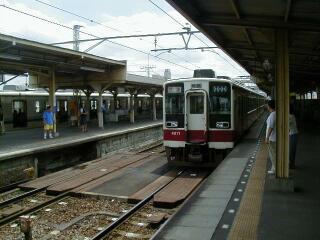
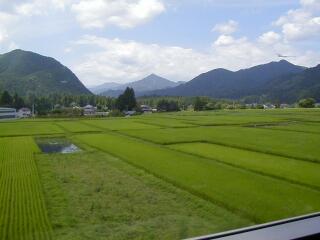 After crossing Tokyo's endless suburbs and neighbouring cities
for more than an hour, the landscape turns more friendly. As on
nearly every even (or made even) spot in Japan, rice is grown.
After crossing Tokyo's endless suburbs and neighbouring cities
for more than an hour, the landscape turns more friendly. As on
nearly every even (or made even) spot in Japan, rice is grown.
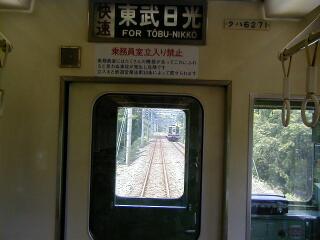
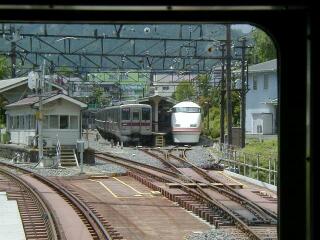 One advantage of nearly all Japanese train is the possibility to
enjoy the train driver's perspective - however, many Japanese
(especially fathers and their kids) have the same idea, so the
place is often quite crowded.
There are several possibilities to get to Nikko by train: Not only
the private Tobu company, but also JR has its own line to Nikko.
Furthermore, in addition to the ordinary trains
there are several types of express trains operating non-stop between
some of Tokyo's stations and Nikko.
One advantage of nearly all Japanese train is the possibility to
enjoy the train driver's perspective - however, many Japanese
(especially fathers and their kids) have the same idea, so the
place is often quite crowded.
There are several possibilities to get to Nikko by train: Not only
the private Tobu company, but also JR has its own line to Nikko.
Furthermore, in addition to the ordinary trains
there are several types of express trains operating non-stop between
some of Tokyo's stations and Nikko.
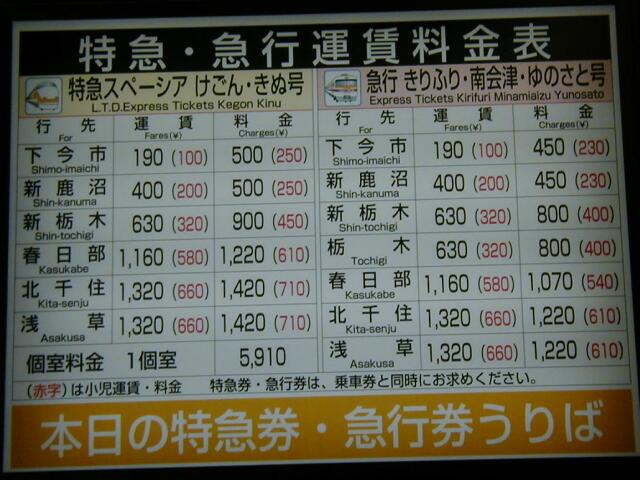 However, the expresses cost a hefty surcharge....the nice express
in the picture above costs the ordinary (one-way) fare of 1320 Yen
plus an extra 1420 Yen surcharge.....for a guaranteed seat and some
20 minutes time saving. If one's up to maximise spending, it is
possible to save another 10 minutes using JR including a Shinkansen leg,
driving up the one-way fare to a hefty 5300 yen.
However, the expresses cost a hefty surcharge....the nice express
in the picture above costs the ordinary (one-way) fare of 1320 Yen
plus an extra 1420 Yen surcharge.....for a guaranteed seat and some
20 minutes time saving. If one's up to maximise spending, it is
possible to save another 10 minutes using JR including a Shinkansen leg,
driving up the one-way fare to a hefty 5300 yen.
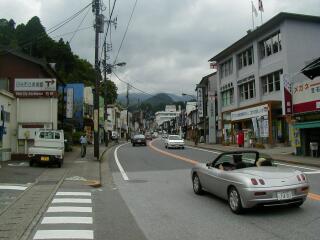
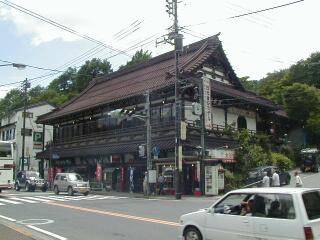 The first impression of Nikko is kind of disappointing - a long street
with many buildings in need of (at least) fresh paint, and heavy car
traffic. (Both of us were reminded of the town of Triberg in the Black
Forest, a similar tourist magnet that apparently can afford to look
shabby as the busloads of tourists flock in anyway.)
The first impression of Nikko is kind of disappointing - a long street
with many buildings in need of (at least) fresh paint, and heavy car
traffic. (Both of us were reminded of the town of Triberg in the Black
Forest, a similar tourist magnet that apparently can afford to look
shabby as the busloads of tourists flock in anyway.)
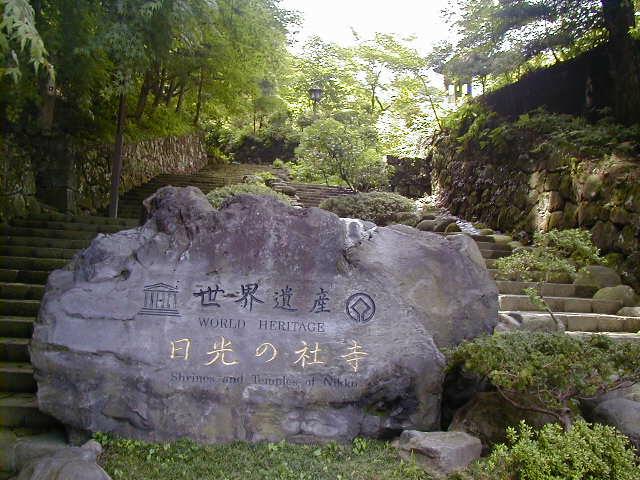 After 20 minutes walk uptown, the scenery changes, and the exhaust fumes
are quickly forgotten when climbing up the stairs leading to the shrines
and temples of Nikko.
After 20 minutes walk uptown, the scenery changes, and the exhaust fumes
are quickly forgotten when climbing up the stairs leading to the shrines
and temples of Nikko.
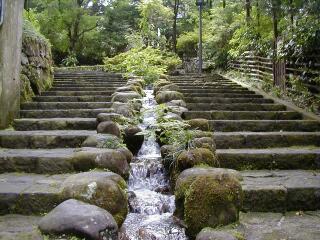
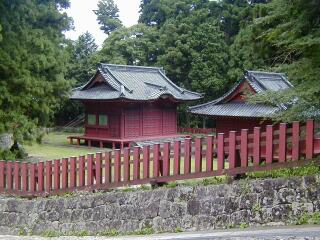
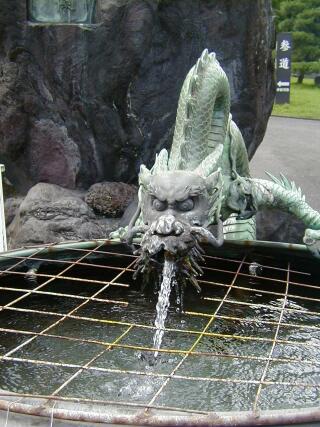
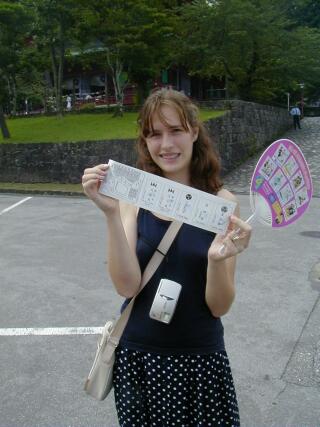 Nikko has an "interesting" pricing policy: The entrance fee to each of the
five main attractions ranges from 850-1250 Yen....but at a booth at some
distance from the main entrance a "two shrines and one temple ticket" is
available for those who know, costing merely 900 Yen - in our very useful
"Lonely Planet" travel guide we found (not only) that valuable hint.
Nikko has an "interesting" pricing policy: The entrance fee to each of the
five main attractions ranges from 850-1250 Yen....but at a booth at some
distance from the main entrance a "two shrines and one temple ticket" is
available for those who know, costing merely 900 Yen - in our very useful
"Lonely Planet" travel guide we found (not only) that valuable hint.
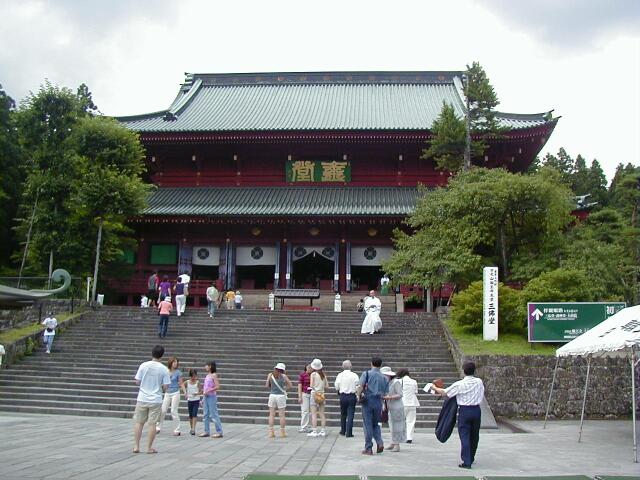 1200-year-old Rinno-ji Temple (if I didn't mix it up) - pictures inside are forbidden
1200-year-old Rinno-ji Temple (if I didn't mix it up) - pictures inside are forbidden
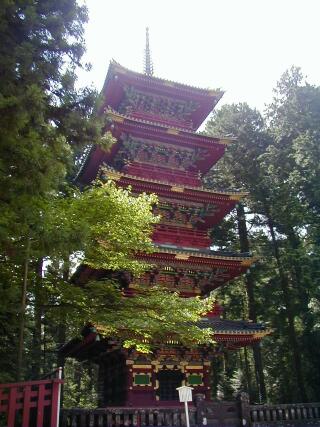
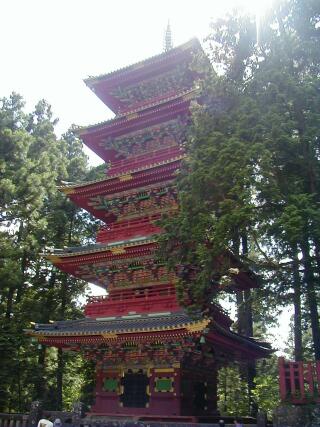 This five-storey pagoda has no foundation - it is said that a pendulum inside
guarantees stability even in the case of a serious earthquake.
This five-storey pagoda has no foundation - it is said that a pendulum inside
guarantees stability even in the case of a serious earthquake.
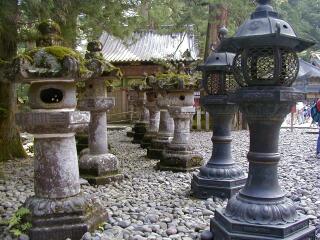
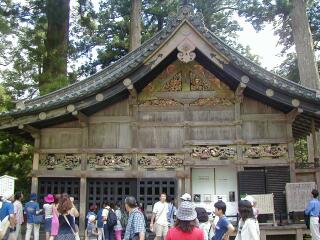 Passing the stone lanterns, an at first view harmless building stables some
ponies and carries a world-famous carving....
Passing the stone lanterns, an at first view harmless building stables some
ponies and carries a world-famous carving....
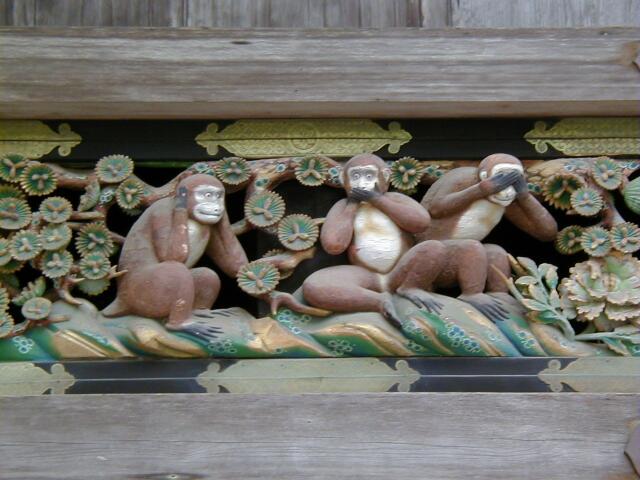 ...the three monkeys which do not hear, say or see evil.
...the three monkeys which do not hear, say or see evil.
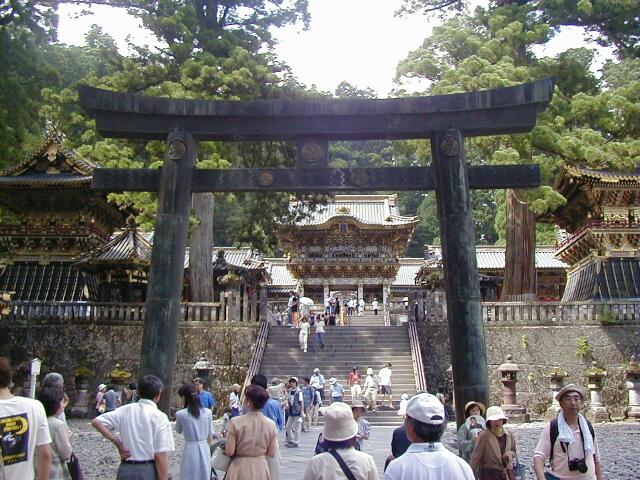 Following the crowds through the Yomei-mon Gate, leading to
Tosho-gu Shrine.
Following the crowds through the Yomei-mon Gate, leading to
Tosho-gu Shrine.
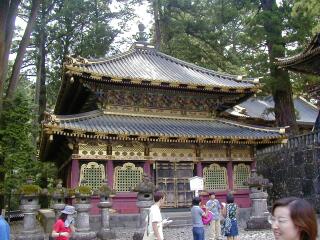
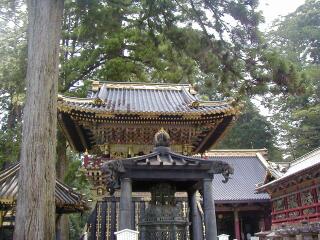
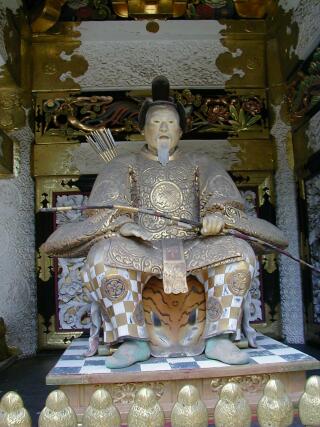
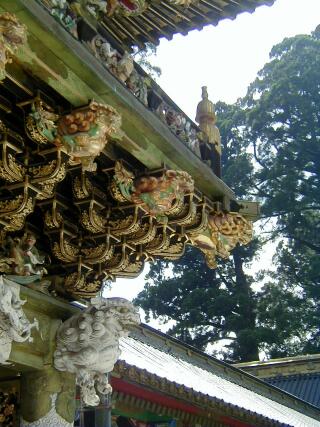
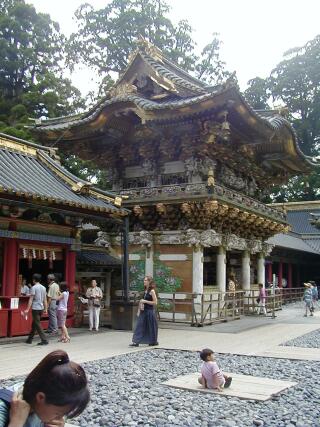
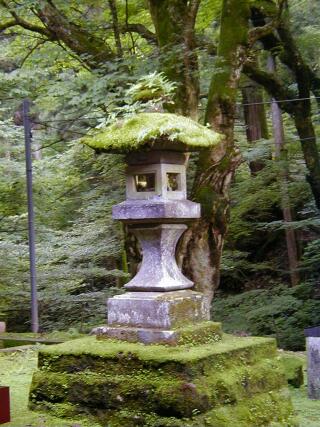 Opulent pieces of art, created throughout the years by an army of
15000 craftsmen.
Opulent pieces of art, created throughout the years by an army of
15000 craftsmen.
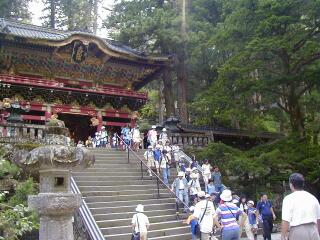
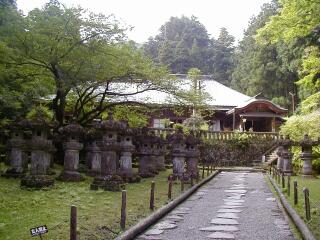
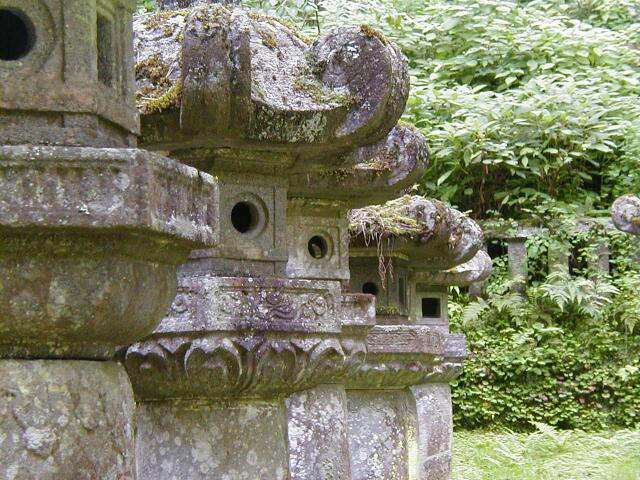 Despite the number of people, it is perfectly possible to find quiet
places in the spacious area.
Despite the number of people, it is perfectly possible to find quiet
places in the spacious area.
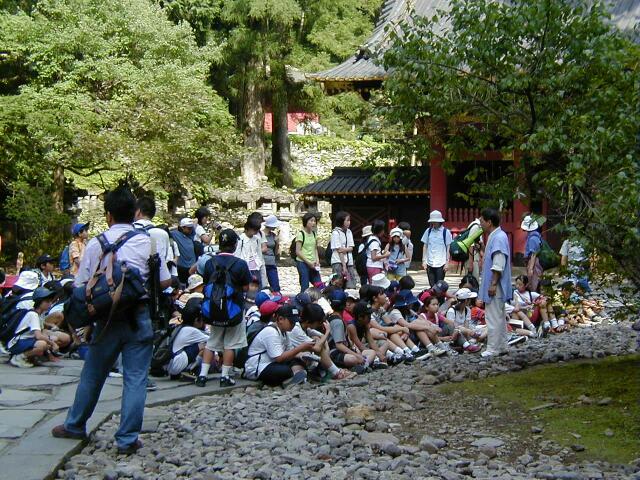 Quite usual in Japan: Commands through a megaphone, here to discipline
one of the many school groups.
Quite usual in Japan: Commands through a megaphone, here to discipline
one of the many school groups.
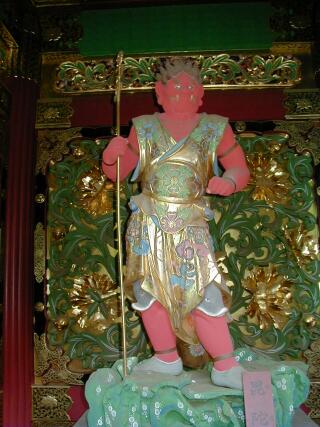
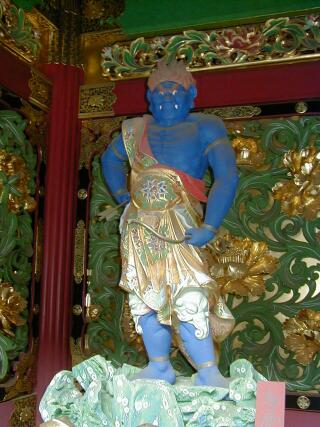 The guardians of Taiyuun-boon Shrine....
The guardians of Taiyuun-boon Shrine....
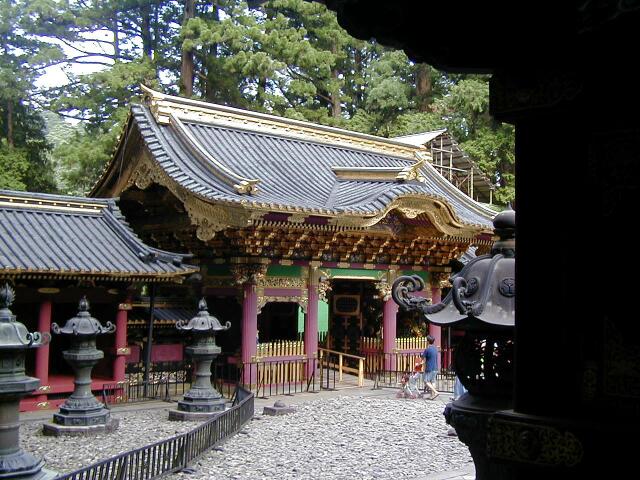 ...and their housing.
...and their housing.
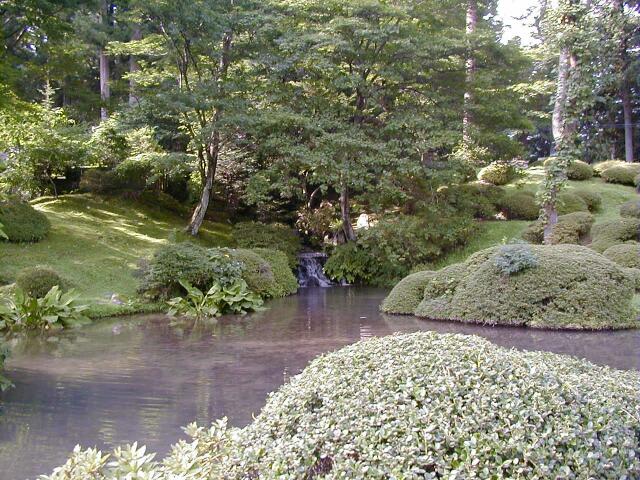 Time for relaxation and reflection in a nearby Japanese garden.
Time for relaxation and reflection in a nearby Japanese garden.
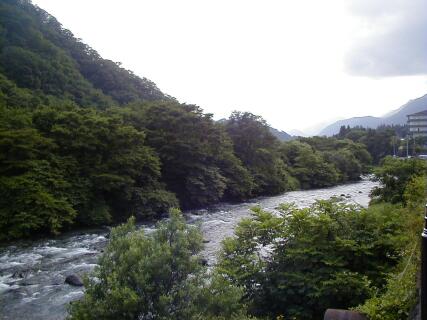
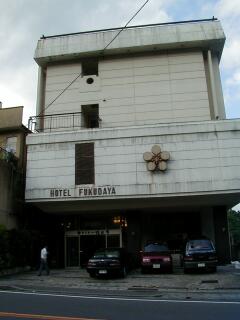 Further upstream is Lake Chuzen-ji and its hot springs - reason
enough for another visit. Less inspiring are Nikko's hotels like
the one above, still costing a small fortune for a weekend.
Further upstream is Lake Chuzen-ji and its hot springs - reason
enough for another visit. Less inspiring are Nikko's hotels like
the one above, still costing a small fortune for a weekend.
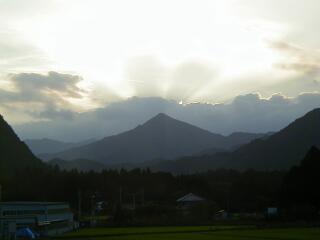
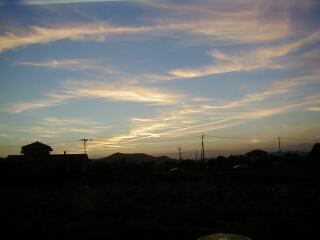 No, it's not Fuji-san showing in the evening twilight - there are
plenty of perfectly shaped mountains in Japan.
No, it's not Fuji-san showing in the evening twilight - there are
plenty of perfectly shaped mountains in Japan.
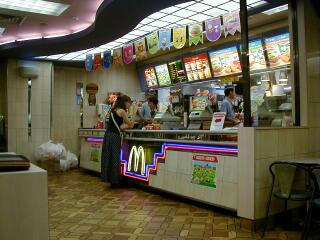 After the fascinating cultural overdose, back in Tokyo, we became weak in sight of the
rounded golden "M" and felt that we deserved their more worldly diet to
push us back into Tokyo's everyday life :-)
(erstellt/created: 21.10.2000, letzte Aenderung/last change: 21.10.2000)
After the fascinating cultural overdose, back in Tokyo, we became weak in sight of the
rounded golden "M" and felt that we deserved their more worldly diet to
push us back into Tokyo's everyday life :-)
(erstellt/created: 21.10.2000, letzte Aenderung/last change: 21.10.2000)
©10/2000 claus@eulog.de